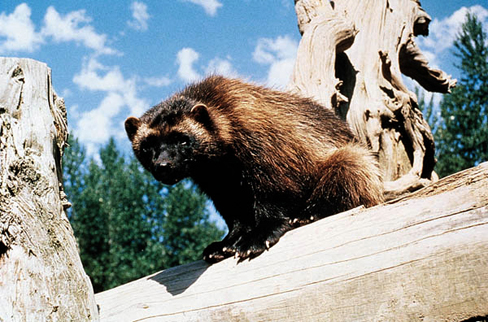Say “wolverine” and the image that comes to mind is often Hugh Jackman.
But researchers out of the University of Alberta are looking to fill gaping holes in the knowledge surrounding the mysterious creature — the northern boreal dwelling medium-sized mammal, that is. Over three winters, a team will venture into the forests of northwestern Alberta to catch, collar and track wolverines, hoping to understand the human impact on them.
It is research that puts Matthew Scrafford face-to-face with the animal.
“It is an unbelievable experience to have a wolverine a few feet from your face,” says Scrafford, a University of Alberta PhD student who is working on the project.
Since last fall, the team has trapped and released eight adult wolverines in the area of Rainbow Lake. Scrafford outfits each one with a GPS collar. The information these high-tech neck-ties provide will shed some light on the daily life of this elusive animal, its habits and its range.
Wolverines are considered “data deficient” in Alberta and Scrafford wants to remedy that. “There’s not a lot of research out there,” he says. “A big crux of this research is to understand how the populations are doing. This is especially important in light of a lot of industrial activity in the northern boreal forest, mainly oil, gas and forestry.”
To determine the effect of industry on wolverines, the team is studying two sites: Rainbow Lake, the site of industrial developments since the 1960s, and Bistcho Lake, about 300 kilometres away and relatively undisturbed by oil, gas or forestry. The idea is to compare the way wolverines use the different landscapes.
“We can come up with ways to manage them so we can have both wolverines and resource extraction together in these environments,” he says. With partners ranging from the Alberta Conservation Association to Strategic Oil and Gas to the Dene Tha First Nation, it seems everyone is curious about what wolverines are up to.
The trick will be getting a large enough sample size, and keeping the 15 log-box and eight portable traps intact in the meantime. Scrafford says a wolverine has the potential to chew a foot or more of log in the span of 10-12 hours, which is why they build the traps with spruce or pine trees that are 30-40 centimetres thick.
“They’re pretty impressive. When they want to get out, they want to get out.”
To see how log traps are constructed, check out this video from the Alberta Conservation Association.




